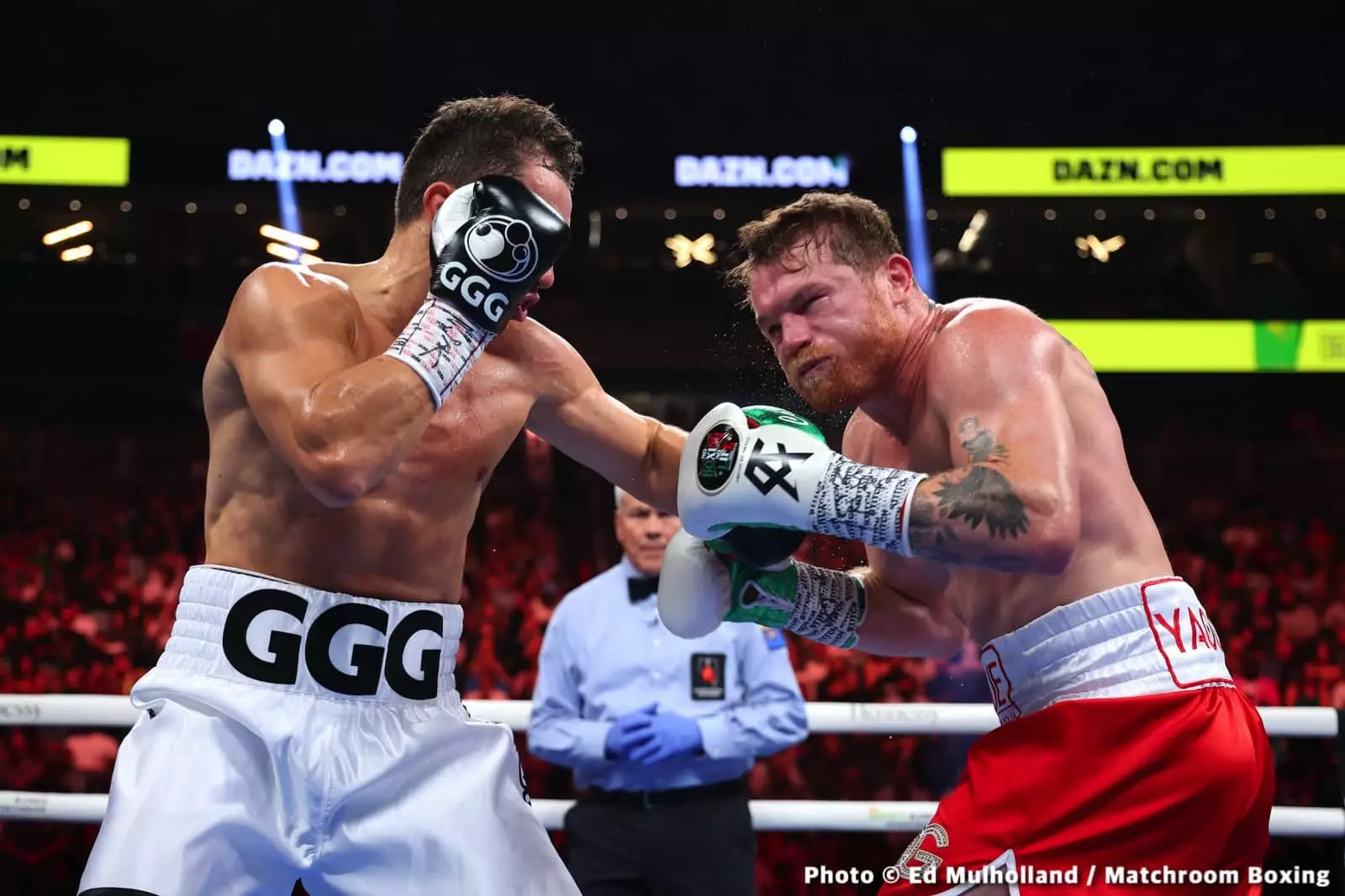When examining the impending showdown between Terence Crawford and Canelo Alvarez, it’s tempting to focus solely on their skill sets, records, and tactical approaches. Yet, beneath the surface lies a fundamental disparity that could determine the final outcome: the raw power and physical durability that Canelo wields, which Crawford simply cannot replicate. Abel Sanchez’s perspective underscores this contrast, emphasizing that Crawford’s technical prowess alone won’t suffice to neutralize Canelo’s relentless aggression and devastating punch.
Crawford’s mastery of boxing finesse, footwork, and tactical ingenuity has earned him an undefeated record, which can create an illusion of invincibility. However, boxing isn’t merely a contest of skills; it’s a war of attrition. In Canelo, we see a fighter whose power transcends mere technique. His ability to absorb punishment and keep coming forward amplifies his threat exponentially. Crawford’s challenge is compounded by his lack of comparable knockout power—an element that Golovkin, with his formidable punching strength, exploited effectively in previous fights. Sanchez makes it clear: this is a fundamental difference that cannot be overlooked or underestimated.
Strength, Size, and the Evolution of a Fighter
One of the most critical factors Sanchez highlights is Crawford’s physical development. The leap from 154 pounds to 168 is considerable. Unlike Gennadiy Golovkin—who had a natural frame and an organic, explosive power at middleweight—Crawford has not had the luxury of time to build similar strength. His recent performances at 154 showed a fighter punching at welterweight levels, primarily relying on volume and technique rather than brute force.
The rush to ascend divisions before fully adapting physically risks a dangerous mismatch. Without the proper time to develop strength, Crawford’s power remains insufficient, especially against a fighter of Canelo’s size and resilience. Sanchez contends that Golovkin’s physicality, which made him a relentless pressure fighter capable of dictating the fight’s tempo, is absent in Crawford. It’s this deficiency that makes Sánchez doubt Crawford’s ability to stand toe-to-toe and withstand Canelo’s punishing punches.
Power Dynamics and the Critical Importance of Timing
In boxing, timing is everything. Sánchez notes that Crawford’s tendency to fight aggressively could open windows for Canelo to capitalize. When Crawford tires or drops his guard momentarily—exemplified against Madrimov—Canelo will look to exploit these weak spots with calculated, powerful shots. Golovkin’s ability to maintain pressure against Canelo was rooted in his consistent, devastating power, which kept Canelo at bay and allowed GGG to dictate the rhythm of the fight.
Crawford’s style, characterized by quick combinations and volume punching, may serve him well against opponents who lack defense or physical durability. But against Canelo, whose own attributes include excellent timing and a granite chin, this approach is fraught with danger. The fight trajectory favors Canelo if Crawford cannot impose physical dominance or combine his skill with substantial power—something Sanchez believes Crawford has yet to develop.
The Rushing Towards a Clash That Could Backfire
Crawford’s decision to move swiftly into the 168-pound division bypassed the usual gradual build-up and tune-up fights, risking a disaster. Instead of easing into the new weight class and developing strength in a controlled manner, Crawford has rushed into a high-profile bout with Canelo. This haste, compounded by the absence of proven knockout power at 154, likely leaves him unprepared physically for an opponent of Canelo’s caliber.
Even his recent bout against Madrimov revealed a fighter trying unsuccessfully to convert volume into power—a tactic unlikely to work against a fighter like Canelo, who can absorb shots and retaliate with thunderous punches. The physical ramp-up necessary to match Canelo’s strength seems absent, making the fight’s outcome more dependent on Crawford’s technical skill and stamina, neither of which may be enough in the face of Canelo’s inherent power advantage.
Why Power Is Often the Equalizer in Modern Boxing
In contemporary boxing, even the most skilled fighters acknowledge the undeniable truth: power is an equalizer. A talented boxer with less power can outthink and outmaneuver opponents, but when facing durable, explosive punchers like Golovkin or Canelo, precision alone loses significance. Sanchez’s comparison underscores that Golovkin’s power was not just a tool but a fortress—keeping opponents at bay, controlling them, and creating openings for decisive counters.
Crawford lacks this fortress. His excellent skills don’t compensate for the absence of knockout punch threats that force opponents to fight differently. Against a resilient opponent like Canelo, whose consistency and strength have defined his career, Crawford’s technical finesse alone might just be insufficient to tilt the scales. Power, in this sense, remains the ultimate currency—a currency Crawford has yet to earn in his current physical state.
In sum, the impending fight underscores a vital lesson: boxing battles are often decided not just by who is more skilled, but by who can impose their will physically. Crawford’s natural talent, impressive as it is, faces a formidable obstacle in Canelo’s unparalleled power and resilience. As the fight looms, Sanchez’s insights serve as a stark reminder that not all skills can compensate for the fundamental advantage of physical strength.


Leave a Reply